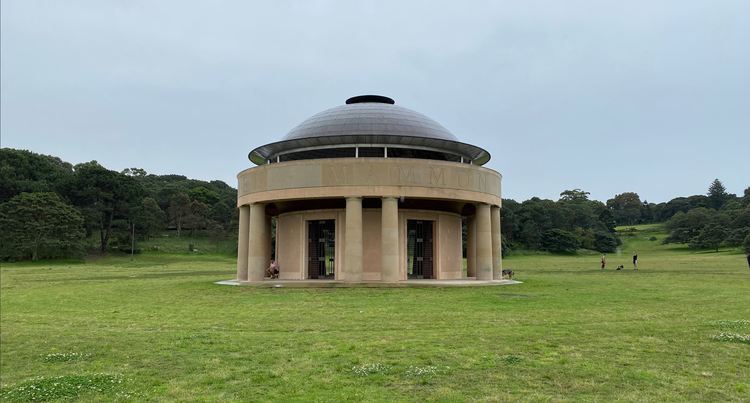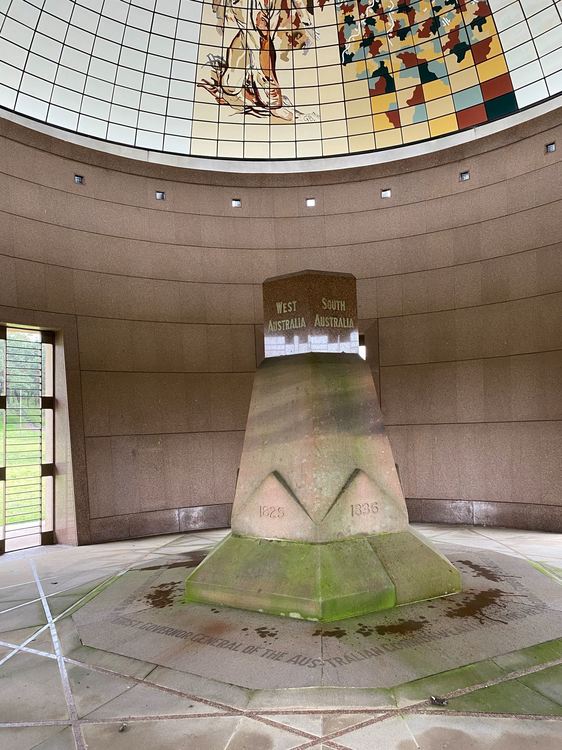Federation Pavilion
By early afternoon on New Years Day, 1901 more than 60,000 people had gathered in Centennial Park, dressed in their Sunday best, to witness the proclamation of the Commonwealth of Australia. The Great Inaugural Procession had already made its way through the streets of Sydney and dignitaries, politicians and community leaders were taking their places for the momentous occasion.
The section of the Park forms a natural amphitheater, enabling large numbers present to glimpse the temporary pavilion in the centre of the valley, constructed especially for the occasion. The Pavilion was a 14 metre high, octagonal, domed structure made of plaster of Paris, richly decorated with castings of native flora and the imperial coat of arms. Inside the structure sat a stone obelisk - the 'Federation Stone' - created to symbolise the coming together of the states and territories.
At 1pm, the Queen's Proclamation was read, the Governor General and Federal Ministers were sworn in and a 21-gun salute declared the people from Australia's six separate colonies united in a Federal Commonwealth of Australia.
Following this auspicious beginning, the pavilion fell into a state of decline as the plaster of Paris quickly degraded and it was eventually removed in 1903. The Federation Stone which had been housed within the pavilion was later placed on a sandstone pedestal and surrounded by an iron picket fence in 1904. It remained there until the new Federation Pavilion was opened in 1988 as part of the Bicentennial Celebrations.
The new Pavilion was designed by Sydney architect Alec Tzannes, who is also a professor and previous Dean of Faculty of the Built Environment. The design incorporates the landscape of Federation Valley and is based on a circle - the symbol of unity.
Inside the building, the symmetrically designed, marble laid interior provides a solemn and serene setting for the original Federation Stone. It now features a marble hexagon stone cap on the original sandstone obelisk and each side is engraved with a state and the date of its founding.
The inscription on the sandstone frieze of the Pavilion, just below the dome, 'Mammon or Millennial Eden', is a little perplexing to first-time visitors. The words are a paraphrase of questions posed in the poem Australia by Bernard O'Dowd, written in 1901:
A new demesne for Mammon to infest?
Or lurks millennial Eden 'neath your face?
The paraphrase was suggested by Professor Manning Clark who believed that the poem reflected the principal obsession of the intellectual community at the time - will Australia become a country of corrupt, 'ill-gotten' wealth or will we create a paradise that will last for 1,000 years?
Tzannes says the words add significantly to understanding the history behind the building. "Using the poem on the building forces you to rove through time and to understand what really was the feeling at the time," he says.
-
The Story of Jack Spriggins and the Enchanted Bean
-
Sun, Moon, and Talia
-
The Enchanted Frog
-
The Queen's Croquet-Ground
-
Nenillo and Nennella
-
Blackbeard's Ghost
-
The True History of Little Golden-Hood
-
The Dullahan
-
Three Sisters
-
The Mirror of Current Events, or Beauty to the Highest Bidder
-
The Legend of Saint Galgano

